The Canon EOS R7 has long been tipped to be the camera giant's next big launch, with the most recent rumors suggesting a March release. But not only will it miss that date, we haven't heard a thing about the camera in the two months since those rumors first surfaced – with Canon seemingly focusing on higher-end priorities.
Rumored release dates are, of course, far from concrete, and the Canon Rumors post predicting a March release for the hobbyist camera did rightly contain the caveat that "announcement dates for products can be affected by the current manufacturing challenges".
But what's less common is the complete absence of any leaks or speculation about why such a big launch may have missed a release window that was predicted by, according to Canon Rumors, a "pretty solid source". Instead, this month Canon revealed some business strategy plans with some very telling comments about its plans for the EOS R system.
The Canon EOS R7 is expected to be a landmark launch because Canon's EOS R system, including both cameras and lenses, is currently very high-end. With the expected inclusion of an APS-C sensor, the EOS R7 will (on paper) act as the spiritual successor to the Canon EOS 7D Mark II DSLR – and also likely mark the end of its EOS-M series.
But according to Canon's 2022 strategy report , this isn't where the sales are. The report concludes that "although the overall [camera] market continues to shrink, this mainly reflects lower sales of entry-class models. In contrast, demand among professionals and advanced amateurs seeking high-quality image expression remains strong."
This explains why Canon has focused on cameras like the Canon EOS R5 and EOS R6 , and fleshing out its range of high-end RF lenses. Canon was keen to stress that it's planning to expand its RF lens range "at the same pace", which would mean another eight new lenses this year and, by 2025, around 58 lenses for the whole system.
On that theme, we recently saw Canon announce the world's longest lens for mirrorless cameras, the RF 1200mm f/8L IS USM , alongside the similarly pricey RF 800mm f/5.6 L IS USM . The latest Canon rumors are also lens-based, with the camera giant reportedly testing prototypes of some new 'DO' super-telephotos that provide serious reach in compact, lightweight bundles.
And the Canon EOS R7? Whether it's down to chip shortages, supply chain issues or other priorities, its launch seems to have been shunted back to later in the year. Given the six-month shipping delays to cameras like the Canon EOS R3, let's hope it's available to buy before 2023.
Analysis: Blown off track, rather than derailed
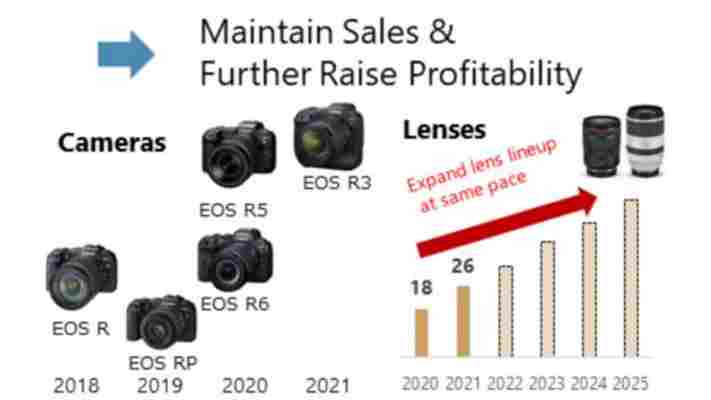
We recently argued that a perfect storm had blown away affordable mirrorless cameras – and similar forces are likely to behind the apparent delay to the Canon EOS R7.
Most camera manufacturers are in a quandary about when to release new models, given that stock is in such short supply. For Canon, the continuing success of pricier models like the Canon EOS R5 also likely lowers the urgency of releasing more affordable choices like the rumored EOS R7 – after all, some impatient photographers may bite the bullet on a higher-end camera.
The problem is that Canon's strategy of focusing on more premium EOS R cameras and lenses predates the global cost-of-living crisis – which means the demand for affordable successors to the Canon EOS R and Canon EOS RP is growing sharply among non-professionals. Alternatively, it could simply evaporate as the year progresses, as hobbyists explore second-hand bargains instead.
Either way, it does look like Canon will be fleshing out its EOS R range with some new models later this year. In its recent strategy report states that it thinks the camera market "is bottoming out" and that "going forward, we will continue to expand our lineup in response to user feedback, secure the global No. 1 market share position in mirrorless cameras, maintain the level of sales, and further increase profitability by expanding automation".
The latest speculation suggests that Canon's planning to launch three EOS R cameras in the second half of 2022, including the Canon EOS R7 and a successor to the aging Canon EOS RP . It's been a lengthy wait for anyone who's been looking for an affordable, modern entry-point into Canon's excellent mirrorless camera system. But 2022 should eventually reward that patience, despite the inevitable delays.
Ranked: the best Nikon cameras ever
Nikon is back. With the launch of the Nikon Z9 , the most powerful camera in its history, the camera giant has again reasserted itself in its new mirrorless battle with Canon and Sony. But what exactly is the Z9's family history, and who were its influential forebears?
The Z9 is today’s crown jewel in a Japanese company that was formed way back in 1917 and whose westernized name Nikon was established in the 1980s. From its early days dabbling with S-series rangefinders in the 1950s to focusing efforts on its SLR line of cameras – a move that established Nikon among professional photographers ever since – Nikon has been a consistent presence. For decades, it's been making some of the best cameras for photography.
But it isn't just a story of photographic innovation. After all, innovation doesn’t necessarily translate into long-term success – just ask the likes of Minolta and Kodak. Wait, you can’t. It’s probably fair to say that Nikon hasn't been a big innovator, with a more recent tendency to arrive late to the party. Yet it is a company that has remained a key player in the camera industry for multiple decades. How?
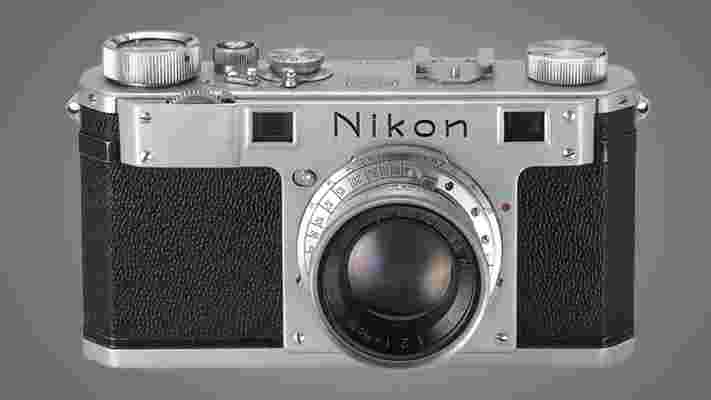
When you look back at the history of Nikon's best cameras, what’s consistently striking is how Nikon appears to patiently assess the best existing technology around, then develop, refine and compile it into some of the most compelling and capable cameras available. Then arrive at the party at five-to-midnight with a bang.
A classic example is its move to mirrorless, and now the Nikon Z9. Its first all-purpose, professional-level hybrid mirrorless camera is revolutionary and immediately challenges other leading cameras like the Sony A1 and Canon EOS R5 . Thanks to its latest firmware update , it arguably eclipses both of them.
But what are its spiritual predecessors? We’ve put our collective heads together to compile a list of the best and most important cameras of this illustrious company’s 100-year-plus history, starting with the most important. Further down, you can also find some honorable mentions that highlight some fascinating collaborations that also deserve a mention. But first, that (perhaps controversial) top ten...
The best Nikon cameras ever
1. Nikon F (1959)
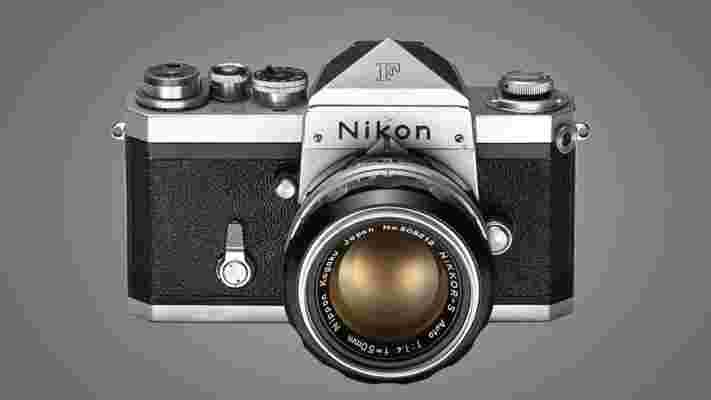
In a time when most professional photographers had a Leica or Zeiss rangefinder in hand, Nikon launched its first SLR camera to market, the Nikon F. Was the Nikon F a new concept? Not entirely. But what the camera did was bring together all the best technology available at the time into a single, more affordable modular camera system.
It became the definitive 35mm camera of the era and established the SLR as the future. Over 14 years, almost one-million Nikon F units were made, plus it was superseded by more advanced models over the following decades, during which Nikon enjoyed a virtual market dominance until the autofocus era. Every existing Nikon SLR, DSLR and mirrorless camera since has taken some design cues from the Nikon F.
Famously used to cover everything from the Vietnam war to NASA space programs (the F-Mount is the only ever lens mount used by NASA), the Nikon F is a reliable, bullet-proof modular 35mm camera with interchangeable screens and prisms, meaning it could be retrofitted with the latest tech, including advances in metering. Its features include a focal plane shutter with speeds up to 1/1000 sec, depth-of-field preview, flash sync, a removable back for 36 and 250-exposure reels, while its 60+ year-old F-Mount survived into the digital era. When we think of Nikon, this is where things truly began.
2. Nikon Z7 (2018)
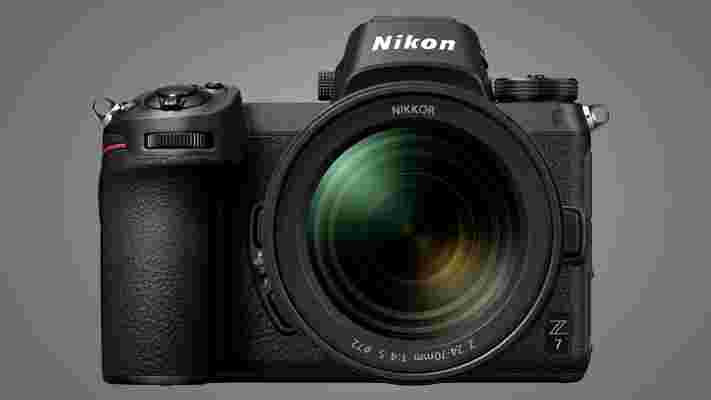
Coming almost 60 years after Nikon's watershed SLR moment that introduced the Nikon F and its F-Mount for lenses, the company well and truly marked its mirrorless future with the twin launch of the Nikon Z7 and Z6. Featuring its first new lens mount since the SLR days (asides from a brief foray with the Nikon 1-mount with 2.7x crop factor), Nikon’s Z-mount is the most versatile full-frame lens mount available today thanks to its wide diameter and short flange distance.
The Nikon Z7 was the best specced Z-series camera at launch, offering the same 45MP resolution as the Nikon D850 , plus many mirrorless benefits that include in-body image stabilization (IBIS), an EVF with real-time exposure information, new autofocus modes including Eye AF, a more versatile 4K video capture experience and silent shutter, all in a more compact body with great form factor.
Not only is the Z7 is one of the most comfortable cameras in the hand, its Z-series lenses also perform better than F-Mount lenses for edge-to-edge clarity, better control over lens distortion and sharp detail at maximum aperture. For Nikon, the future is Z.
3. Nikon D1 (1999)
The true digital camera pioneer was Kodak, but the Nikon D1 marked Nikon’s attempt to challenge Kodak’s professional DSLR dominance, proving to be a milestone in the development of pro DSLRs. Its design and controls were closely based on the Nikon F5, making the transition from film to digital as easy as possible for professional photographers. Nikon’s F-mount for SLR was maintained in the D1 too, meaning photographers could bring all of their F-mount glass along for the ride and into a new digital era.
Features-wise, the D1 packed a 2.7MP DX-format CCD image sensor, a maximum burst rate of 4.5 fps, 256-segment matrix metering, a snappy five-area multi-cam autofocus system, and shutter speeds up to 1/16,000 sec. Images were recorded onto removable Compact Flash media with a maximum 2GB capacity.
Although much cheaper than Kodak’s DSLRs, the D1 was a lot more expensive than the pro-film cameras like Nikon F5, nor was its resolution any match. However, despite digital’s humble beginnings, its speedy workflow was the way forward for photo-journalists.
4. Nikon F5 (1996)
Even in the early digital years, the Nikon F5 held its own and was the basis from which Nikon designed its DSLRs to make that film-to-digital transition as simple as possible – just look at the striking resemblance.
While digital was inherently more expensive and finding its technological feet, the F5 could still offer professional action photographers 8fps and a maximum 1/8000 sec shutter speed. We wouldn’t see that kind of performance or the 35mm sensor format in the digital world until the launch of the Nikon D3, which was probably the nail in the coffin for film SLRs in the high-speed photojournalism world.
Advances over the F4 included a new 5-point autofocus, and Nikon’s 3D color matrix metering and support for vibration reduction in Nikon’s newer lenses. The F5 was truly the SLR heyday for action photography.
5. Nikon Z9 (2021)
Recently awarded five stars in our full Nikon Z9 review , the Nikon Z9 is the first professional mirrorless camera by Nikon for action photographers. The features are too many to list here, but highlights include the 45MP full-frame sensor with 20fps continuous shooting (up to 120fps in JPEG only), plus 8K internal video recording up to 60fps. The Z9 retains the look, feel and durability of Nikon’s flagship DSLRs, meaning it is well-suited to the long lenses that will no doubt be attached.
One of the more intriguing design choices is the absence of something – the Z9 ditches a mechanical shutter. The best-ever performance and speed of the processor and sensor read-out tackles the last remaining drawbacks to an electronic shutter: rolling shutter.
Paving the way for total reliance on a comprehensively quicker electronic shutter, this revolutionary mechanical-shutter-less hybrid camera serves any kind of image maker. Once again, Nikon smashed it out the park with the first in a new line of mirrorless cameras and the Z9 redefines an all-purpose camera. It's undoubtedly one of the best cameras for photography , and will be for some time.
6. Nikon D70 (2004)
Nikon's first truly consumer DSLR, the Nikon D70 launched a nickel under $1,000 /£1,000 and competed directly with the Canon EOS 300D, while undercutting Nikon’s own D100 by some distance despite offering many of the same features.
Not only was it lighter and more compact than the D100, but the D70 also offered the 6.1MP APS-C sensor with raw and JPEG capture, 3fps continuous shooting, and an ISO range of 200 to 1600 with auto function.
Prior to the D70, Nikon’s DSLRs were only really handled by professional photographers. Now, digital technology was in the hands of many.
7. Nikon S (1951)
We’d be remiss not to include a Nikon rangefinder in this list. And the Nikon S is the most obvious choice, being the first to hit the world stage – even though the Nikon SP was the closest Nikon rangefinder camera to challenging Leica’s dominance among photojournalists.
Like the Nikon I and Nikon M, the design of the Nikon S was influenced by Contax and Leica rangefinders, combining what Nikon believed to be the best elements of both. However, the Nikon S was the first to feature the 35mm format and enjoy Nikon’s excellent S-Mount lenses, which were widely acclaimed to better the significantly more expensive Leica glass available at the time.
The later versions of the Nikon S series rangefinders released throughout the 1950s influenced the design of the Nikon F SLR that would appear in 1959, sharing the same basic body configuration.
8. Nikon D3 (2007)
In the early 2000s, professional Nikon photographers were growing impatient in the wait for a high-performance auto-focus full-frame camera to match what Canon had brought to the table through its SLRs and then through the digital EOS 1Ds in 2002. Five years later, in steps the Nikon D3, the company's first full-frame DSLR.
It emphatically established a Nikon series of digital cameras that were designed for professional action photographers. And for the following 15 years we could be sure that a swathe of Canon and Nikon cameras with long lenses would be packing the sidelines at major events and capturing critical moments in news and sporting history.
Sitting pretty as the flagship Nikon DSLR, the D3 has since been succeeded by the D3X, D3S, D4, D5 and D6, all of which have delivered Nikon's best camera technology at the time (save for pixels). Yes, back in 2007, the D3 was a powerhouse of a camera, built to withstand harsh environments and deliver high-end performance. The new sensor had a 12MP resolution and an outstanding low-light performance with maximum ISO 25,600 sensitivity. Action photographers could also enjoy rattling off high-speed continuous bursts up to 9fps, plus live view was debuted, too.
9. Nikon F4 (1988)
In the mid 1980s, Minolta shook up the SLR scene with the first autofocus SLR, the Minolta 7000 AF. It was the first real challenge to Nikon’s SLR dominance, and so came the response. Introduced in 1988, the F4 was Nikon’s first professional 35mm SLR camera with autofocus – a single-zone phase-detection system. A new vertical mechanical shutter also made for a quieter shutter action.
Designed by Giorgetto Giugiaro, who is synonymous with Nikon’s red stripe, the fully electronic F4 was also the first Nikon with optional battery packs that featured a vertical grip and controls for shooting in portrait format. Replacing the F3, the Nikon F4 ditched the manual film advance lever for a high-speed future, though maintained past F-mount lens compatibility with matrix metering.
Depending which battery pack was attached, the continuous high-speed shooting ranged between 4fps and 5.7fps. There were also custom-designed F4s for special collaborations (see below).
10. Nikon D90 (2008)
A lesser-known fact is that the Canon EOS 5D Mark II was not the first DSLR with HD video recording capabilities. No, that honor goes to the unsung Nikon D90. By intent or accident, creating a primary stills camera that could also shoot video proved a revelation. What caught the imagination of video creators on a budget was the image quality and control over depth of field that a large-sensor interchangeable-lens camera like the D90 offered, especially when compared to the small-sensor dedicated video cameras of that time.
Used to shoot the feature-length film 'Reverie', the D90 was launched in August 2008 (a month before the 5D Mark II) as Nikon's mid-tier consumer DSLR. The APS-C format camera's video spec includes live view, HD 720p video capture at 24 fps, mono sound and manual focus. Stills photographers could enjoy a 12.3MP sensor with sensitivity settings that extended up to ISO 6,400 and a burst rate up to 4.5fps.
Yes, the hybrid D90 inadvertently changed a big part of the camera market forever. Today, most big camera players are focusing their energy on hybrid, and most buyers expect a camera to satisfy both photo and video needs.
Special mentions
Camera makers can be influenced and challenged by competing brands, but sometimes magical things happen when they combine forces. Here are two of Nikon's best collaborations...
Nikon / Kodak NC2000 AP (1994)
Did you know that there was a collaboration between Nikon and Kodak to design a photojournalist’s camera for the Associated Press Agency (AP)? Referred to as either the Kodak or Nikon NC2000 AP, the $17,950 camera fused the existing Nikon N90 body and Kodak's NC2000 digital back. The N90 was a known entity, while the NC2000 introduced a 20.5 x 16.4mm, 1.3 MP M3 Bayer-pattern CCD image sensor with ISO 200-1600 sensitivity settings and, crucially, stored its images on removable Type III PCMCIA (PC) cards.
Yes, removable digital media was the NC2000’s most important innovation. The photographer could hand off a full card, insert another, and carry on shooting. Of course, we take removable digital media for granted today, but in 1994 it proved a revolutionary workflow for press photographers and news agencies.
Despite its bulk – a whopping 7in tall and 1.6kg heavy – plus its grainy detail especially at high ISOs, the instant turnaround of images firmly established the NC2000 AP as the professional's choice of DSLR.
NASA Nikon F4 Electronic Still Camera (1991)
Nikon cameras have been aboard NASA space shuttles since the early 1970s, but arguably their most important collaboration was the first digital camera launched into space, the NASA Nikon F4.
Development began in 1987 and the camera's maiden voyage was aboard the Space Shuttle Discovery STS-48 in September 1991, orbiting the earth for six days with a mission to study the human effects on earth's atmosphere. Prior to the NASA Nikon F4, pictures were captured with film cameras and only seen on the orbiter's return to earth, but now they could be processed and printed within an hour.
As its name suggests, the creation was based on a modified Nikon F4 for NASA's own Electronics Box Assembly, which contained a 15mm square format monochrome CCD image sensor with 1024x1024 pixel resolution. Also within the digital component was a removable hard-disk that had storage for 40 images each with 8 bits per pixel.
Images were viewed onboard via a modified laptop and transmitted to ground using the orbiter digital downlinks at a rate of 2Mbit/s, then processed and printed at the Johnson Space Centre. Only three completed NASA Nikon F4's were ever made – Huey, Dewey and Louie – with later upgrades including a color CCD sensor with 2048x2048 pixel resolution.
I’ve never seen a Nicolas Cage movie – but now I want to watch them all
“This must be what it feels like to be a Nick Cage superfan,” I thought to myself during one particular scene in The Unbearable Weight of Massive Talent, aka the actor’s latest movie.
If you’ve seen any of the film’s trailers, you’ll know the scene I mean. It’s the one where Javi Gutierrez – played by The Mandalorian star Pedro Pascal – shows Nick Cage his, well, extensive Nick Cage memorabilia collection. From those Face/Off golden pistols and the chainsaw from Mandy, to a Con Air script and even a Nick Cage sequin cushion, Javi’s exhibition is certainly a sight to behold.
Ordinarily, I’d consider such a collection to be a little creepy or borderline obsessive, even if it’s in keeping with the film’s tongue-in-cheek exploration of Nick Cage’s illustrious acting career. Yet, for some reason, I found myself smiling as I watched Javi walk Cage through the assembled items, all the while reflecting on the thought I opened this article with.
And that’s an odd feeling for me to have experienced. Not because I’m dead inside, but – and this may shock you, given I’m a journalist who covers movies for a living – because I’ve never seen a Nick Cage film before.
I’ll give you a moment to pick your jaw up off the floor. You read that right: I’ve never watched a Nick Cage film in my life. And I wasn’t ashamed to admit it.
That is, until I watched The Unbearable Weight of Massive Talent. Because, whether by divine intervention, the film’s heart-warming tribute to Cage as an actor and person, or simply thanks to how enjoyable it was, I’m now determined to catch as many Nick Cage movies as humanly possible.
Taking the bunny out of the box
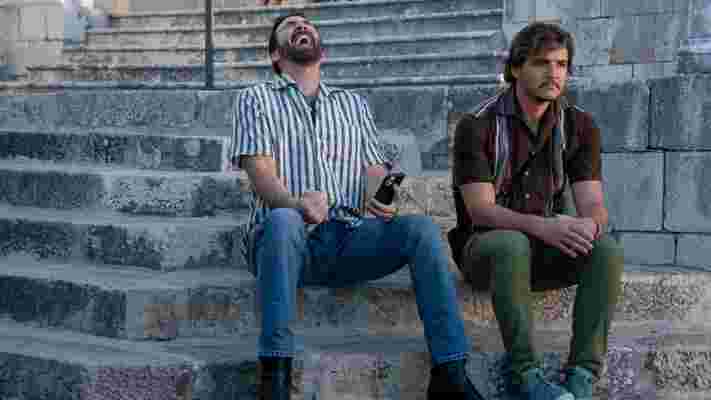
Okay, I’ll preface the rest of this article by saying that I lied. Somewhat, at least. I’ve seen Nick Cage deliver scene-stealing performances as Big Daddy in 2010’s Kick-Ass and Spider-Man Noir in 2018 superhero film Spider-Man: Into the Spider-Verse. In my mind, though, I don’t consider these to be definitive Nick Cage films. He isn’t the lead in either flick, so they don’t technically count as me watching a Nick Cage movie.
Additionally, I know all about those Nick Cage memes and famous film quotes. I’m also well aware of his movies, ranging from fan favorites like Con Air, The Wicker Man and Face/Off, to lesser-known indie flicks such as Pig and Color Out of Space.
Still, I’ve never felt obliged to take in one or more of his films. That’s not down to a lack of respect – clearly, Cage is a talented individual. Simply put, there are thousands of other movies I’ve wanted to watch instead, such as the latest Marvel movie or an old Christmas classic like It’s a Wonderful Life. Sure, I could have made time to watch a Nick Cage movie but I just, well, haven’t.
The Unbearable Weight of Massive Talent, though, has changed that. And, clearly, I’ve been missing out. On a lot.
Before I go any further, a brief film synopsis: the metaphysical action-comedy stars Nick Cage as a satirical, washed-up version of himself who’s struggling to find a balance between his personal and working life. His estranged wife and daughter are tired of his lack of familial commitment, while his lack of acting opportunities has led to spiraling debts.
Out of desperation, Cage reluctantly accepts a $1 million offer to attend the birthday party of Pascal’s Javi, a billionaire and Cage superfan. It isn’t long, though, before Cage gets more than he bargained for – the actor finding himself embroiled in a CIA-led plot to rescue someone’s kidnapped daughter from Javi, a supposedly notorious arms dealer.
Suffice to say, The Unbearable Weight of Massive Talent is a Nick Cage fan’s dream. There are numerous references to his previous roles, over-the-top acting on Cage’s part, and a touching story that doesn’t deliver anything new but feels enriched by Cage’s presence.
It also helps that Cage appears to be having a delightful time portraying a fictionalized version of himself. Cage turned down the role three times before writer-director Tom Gormican convinced him to take it by writing Cage a personal letter. Gormican’s determination paid off, as Cage is on ludicrously top form; his eclectic acting range on full display across the film’s one hour 40 minute runtime. It may be stating the obvious, but nobody else could have played a parodical version of Cage in the manner that the man himself does – and The Unbearable Weight of Massive Talent is all the better for it.
Tired, wired, and deserving of appreciation
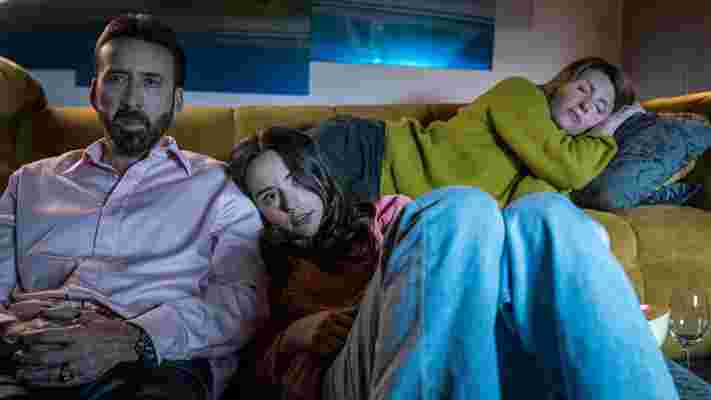
Films that put their stars in ridiculous situations are the kind that regularly pique my interest. And boy, does The Unbearable Weight of Massive Talent go to some surreal but laugh-out-loud places.
How about the fact that Cage is coerced by the CIA to help them conduct a rescue operation in a criminal gang’s heartland? Or that Cage and Javi take LSD, become paranoid that they’re being followed, and embark on a hilarious mission to escape their supposed pursuers? What about Cage disguising himself as an Italian mob boss to infiltrate a rival gang? Or – and this is the weirdest, funniest of the lot – Cage making out with a younger, imaginary version of himself from his Wild at Heart days?
These are just four examples of how enjoyably daft The Unbearable Weight of Massive Talent is, and yet Cage goes along with them all; delivering marvelous performances in each scene as if it’s the last time he’ll ever act. He puts his heart and soul into every one and, as someone who isn’t a Nick Cage diehard, his performance got my thinking. If he’s given 100% effort in a film that pokes fun at his expense, how good is he in other roles, no matter how serious, dramatic, or comedy-focused they are?
Caring about his audience
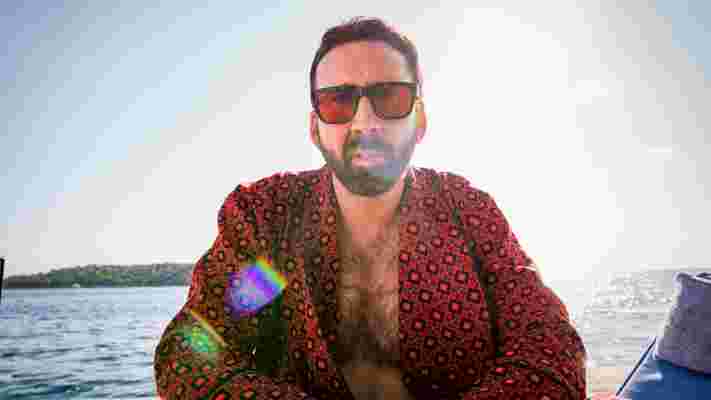
It’s not just Cage’s acting career – or work, as he regularly describes it – that’s made him such a popular figure among film aficionados. By all accounts, he’s one of the most charitable Hollywood stars, donating millions of dollars and supporting various good causes.
He’s also a family man. Cage turned down roles in The Matrix and Peter Jackson’s Lord of the Rings (per Peopleom ) to help raise his son Weston in the late 1990s/early 2000s – a real-life event that appears to have somewhat influenced The Unbearable Weight of Massive Talent’s plot.
By his own admission, Cage is well aware of his messianic status for Cage-ophiles, too. He’s in on the Nick Cage memes and self-deprecating jokes (as a recent New York Times interview reveals). And, after a recent Reddit Ask Me Anything (AMA ) involving the actor and his fanbase went viral over how wholesome it was, it’s clear that the affection and respect between Cage and his followers flows both ways.
As an outsider, I can definitely see the appeal of being a Nick Cage fan, as well as the mythos surrounding him. He’s an actor who gives his all in every movie he’s cast in, regardless of whether it’s a blockbuster, an indie film, or a B movie to help pay off his debts. He’s an eloquent individual with an interesting take on a topic or a wild story to tell. He's an altruistic person with a good heart and the right morals. And, based on the relationship he has with his fans, he doesn’t take that support for granted.
It’s not often that a movie can completely change my opinion of someone, but The Unbearable Weight of Massive Talent has gone a long way to turn me into a devoted Nick Cage follower. If nothing else, I’ll certainly be checking out a few more of his films before I reach a concrete decision. The question is, which one should I watch first?
The Unbearable Weight of Massive Talent is out now in theaters worldwide.